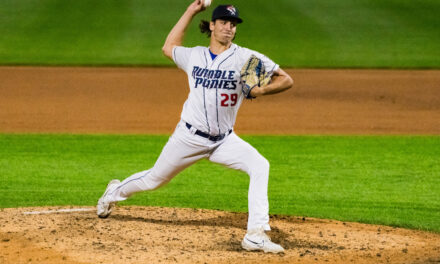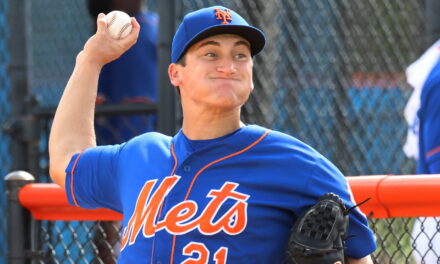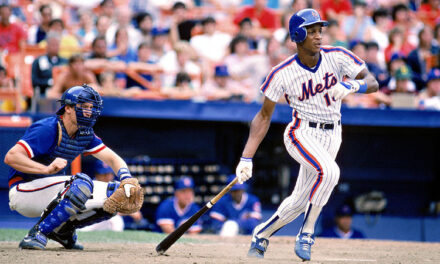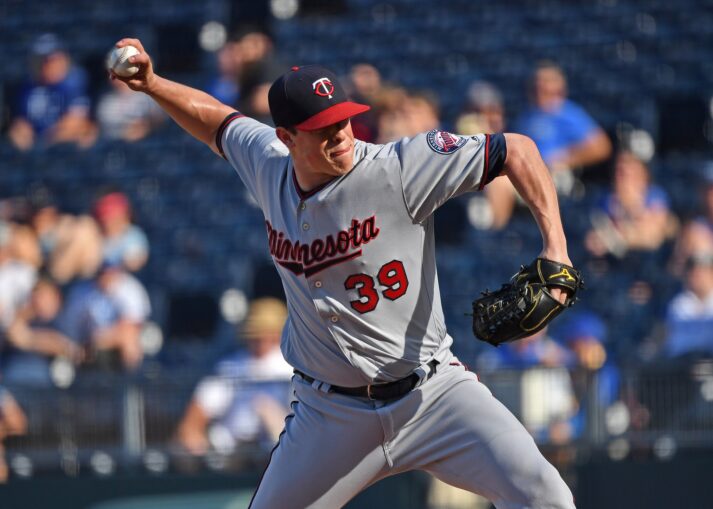
In looking to add depth to their bullpen, the New York Mets signed right-handed sidearm reliever Trevor Hildenberger to a minor league contract in early December.
Hildenberger, 30, comes with three years of major league experience after being selected in the 22nd round of the 2014 MLB Draft from the University of California. The soft-tossing sidearmer made his major league debut in June 2017 with the Minnesota Twins and made a strong first impression. Hildenberger posted a 3.21 ERA over 42.0 innings pitched (37 appearances), with a 1.048 WHIP and a groundball rate of nearly 60.0 percent.
He continued to pitch well in the first half of the 2018 season, sporting a 3.33 ERA with a 1.130 WHIP over 46.0 innings pitched, however, struggled in the second half of the season as his ERA ballooned to 9.00, his walk rate increased over two percent (7.3 to 9.4 percent) and he was surrendering more hard-hit contact (33.3 to 38.2 percent).
The 2019 season saw Hildenberger start off strong, posting a 1.93 ERA with 11 strikeouts to four walks in his first 9.1 innings pitched (13 games) before the month of May. Once the calendar changed, the righty once again struggled, allowing 11 earned runs on 15 hits in just 4.2 innings pitched.
The Twins optioned the sidearmer to Triple-A Rochester in mid-May, where he was working on mechanical changes. While working on his stuff in the minors, Hildenberger suffered an injury, a flexor mass strain, which sidelined him for much of the summer.
After the Twins non-tendered Hildenberger in the offseason, the Boston Red Sox took a flyer him, signing him to a minor-league deal with a big-league invite to spring. However, Hildenberger never toed the rubber in a professional game in 2020 due to there being no minor league season and never being added to the Red Sox’ roster throughout the truncated 60-game regular season.
Hildenberger mainly utilizes a sinker/changeup combo, with those two pitches accounting for more than two-thirds of his pitch usage in each of his three major league seasons. He also incorporates a slider and four-seam fastball, the former of which he’s started to incorporate more into his repertoire (14.4 percent in 2017; 23.0% in 2018; 26.1% in 2019).
His changeup has been his best swing-and-miss pitch, as he’s posted whiff rates of 41.4%, 45.4%, and 38.2% from 2017 to 2019. Among 86 pitchers that had at least 400 changeups swung at from 2017-19, Hildenberger owns the 7th-highest whiff rate of 43.0 percent.
Signing a minor league deal with the Mets offers Hildenberger the chance to reunite with former coach Jeremy Hefner, who he got to work with while Hefner was the Twins’ assistant pitching coach in 2019. Feeling healthy and excited to work with Hefner once more, Hildenberger hopes he can provide the Mets innings and a durable option out of the pen.
I had the privilege of speaking with Hildenberger in December to talk about his development as a sidearm pitcher, his relationship with Hefner, and areas of focus heading into spring training.
MMO: Who were some of your favorite players growing up?
Hildenberger: I grew up in the Bay Area, so my favorite was Barry Bonds growing up. I was a big Giants fan, so I loved J.T. Snow, Rich Aurilia, Jason Schmidt, Jeff Kent; pretty much anywhere from 1997 to 2009.
Some of the pitchers that I really liked watching around the league were Chris Carpenter and Roy Halladay. Two dominant right-handed starters who just ate innings and always pitched well in big situations, so I kind of modeled myself after them when I was in high school.
MMO: Who introduced you to the game at a young age?
Hildenberger: Geez, I don’t know. [Laughs.] I know I’ve been playing for my entire life; I always loved baseball the most even though I played a couple of other sports.
My mom tells me a story that I taught myself to read by going through the newspaper and trying to figure out what time the Giants game was, and I’d read the Giants’ recap from the night before. So, I learned to tell time and to read through just trying to follow the Giants.
MMO: At what point during your development did you start to hone in on pitching?
Hildenberger: High school. I played outfield my freshman year and tried to do it my sophomore year, but after I made varsity they were like, “Just put the bat away and focus on the mound. I think that’s where you’re going to help us the most.”
I never really picked up a bat again.
MMO: When did you start throwing sidearm and how did that develop for you?
Hildenberger: That happened after my third year in college. I went to Cal and I played for five seasons. At first, when I got there, I was the same height I am now – about six-two, six-three – and I was 160 pounds, so I was really skinny, I was like a string bean. I wasn’t good about managing my time, so I really didn’t take weightlifting seriously or diet and nutrition and getting enough sleep [seriously], so I didn’t develop much and I didn’t pitch much my first three years.
I think I threw two innings in my freshman year, didn’t pitch at all in my sophomore year and the team went to Omaha. I had to watch that from my couch, which, at the time stunk because I was watching all of my best friends have the time of their lives. But it’s the ultimate goal for college baseball, so I promised myself next time we had success I wanted to be a part of it. I would do anything to just compete at the D1 level.
My third year I pitched like 10 innings, mostly in blowout games, up six, down six-type situations. At the end of my junior year, I was waiting for the bullpen and the guy ahead of me had the wrong practice jersey on, and so my pitching coach went to him and said, “Jones, why are you wearing number 37? When I picture 37, I picture a corner outfielder, big power guy.” This guy was a small, crafty lefty.
I asked my coach, ‘What do you picture when you see number 26 [Hildenberger’s college number]?’
He said, “You know, there was a reliever for UCLA who threw sidearm who was number 26. And actually, there was another one on Washington who also threw sidearm and wore number 26. Have you ever thrown that way?”
I said, ‘No.’
He said, “All right, step up right now, and let’s try it out.”
I threw a bullpen and it felt natural, it didn’t hurt or anything. I was around the strike zone and he goes, “Okay, if you can throw strikes that way and you can find an off-speed pitch, you’re going to pitch more. In college, 84-86 [mph] with a little bit of sink is going to get ground balls and you’re going to compete.”
I was like, ‘Yeah, absolutely. Let’s do it!’
I went out for summer ball and I took it seriously. I lifted six days a week and put on some weight and [added] velo, found a changeup that I could throw for a strike [and] the slider came a bit later.
It definitely was a last resort, but it wasn’t a joke. I worked really hard at it and I watched videos of guys like Joe Smith, Darren O’Day, and Dan Quisenberry online. I came back my fourth year and pitched a bunch, threw like 50 innings but not very well. I was just happy that I got to compete.
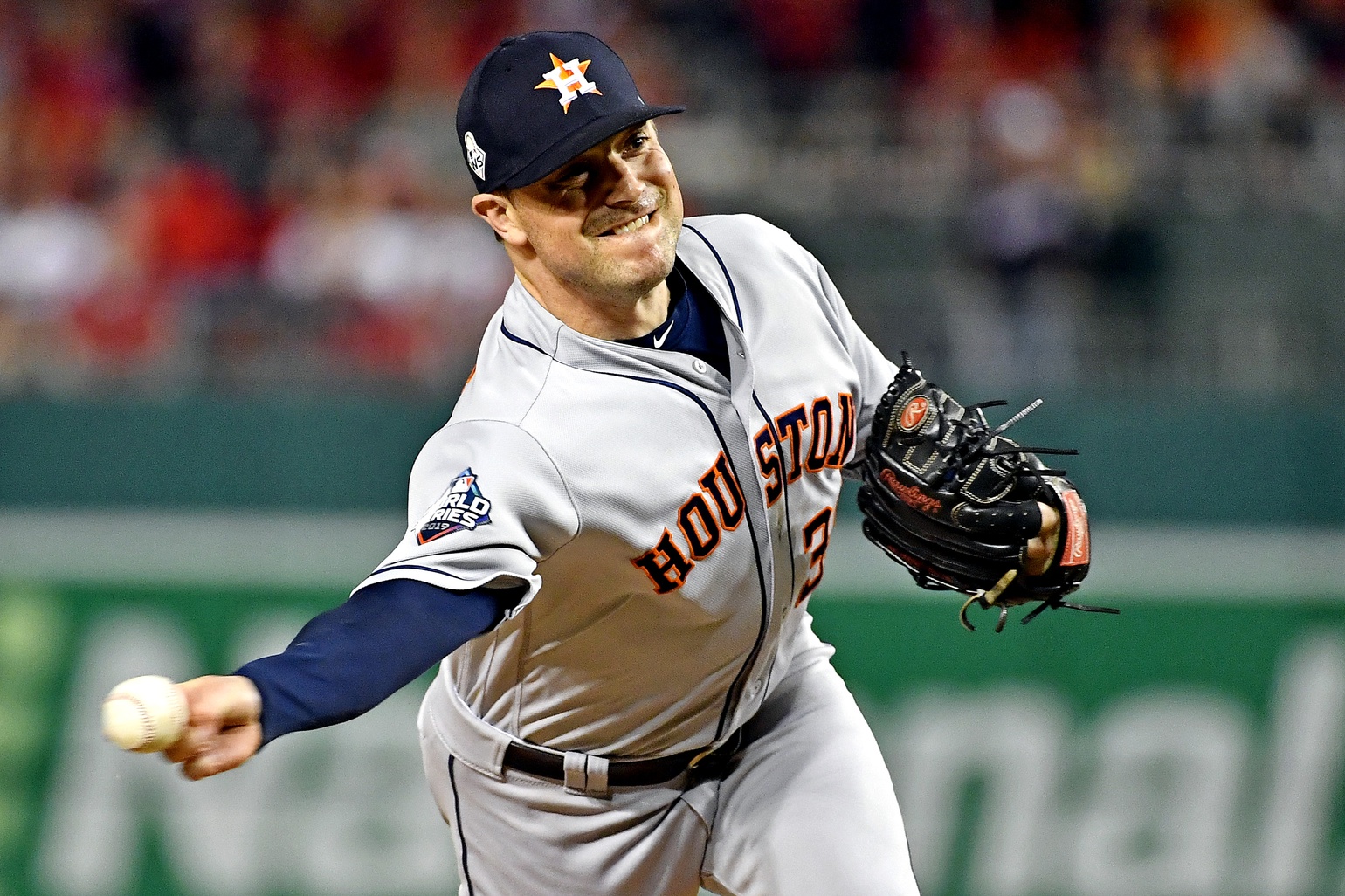
Then my scholarship was up and I didn’t get drafted, all I needed to do was complete a couple of units to finish my degree, so I stayed in summer school.
In August, my coach called me and an incoming freshman unexpectedly signed, so it freed up some scholarship money and they offered it to me to come back and play a fifth year. I leapt at the opportunity and told them I’d play as long as I can. I pitched really well that year, found a slider, and then the Twins took a chance on me.
MMO: What was the biggest adjustment for you from throwing over the top/three quarters, to sidearm?
Hildenberger: I think the head tilt and the shoulder tilt kind of makes me lose concept of the strike zone, or it did at first. Definitely titling my torso over and trying to get lower and lower and trying to find that sweet spot where I could control it but still get good movement [was toughest]. It took a long time, but I think I got it dialed in.
MMO: What memories do you have from the 2014 MLB Draft?
Hildenberger: I was at my mom’s birthday barbecue. I was turning sausages actually; I was manning the grill. The Twins called me and said they took me in the 22nd round, congratulations. They’ll mail me a packet and someone will reach out shortly about when to report. I remember getting off the phone and telling my family, which was cool that they all got to be there.
MMO: You made your major league debut in 2017 with the Twins and pitched extremely well out of the pen in 37 games. You followed that up with a solid first half in 2018. However, from the second half of 2018 on, your walk rate increased while your strikeout percentage and groundball rate decreased. Is there anything you can pinpoint for some of the changes in your numbers?
Hildenberger: I think there were a couple of things going on, but definitely halfway through ’18 something was lost. I kept trying to make adjustments and kept trying to tinker and figure out what was wrong, but I couldn’t piece it all together in ’18 and ’19.
I felt I was in a good place and ready to go in ’20, but COVID-19 shortened the season and there were no minor leagues, so I didn’t get an opportunity to pitch. But I’m really, really happy to be reunited with Jeremy Hefner, who was the bullpen coach with the Twins in 2019, and who I have a good relationship with and am excited to work with again.
Arm feels good, body feels good. I feel like I’m in a good place right now so I’m excited to get to work.

MMO: You mentioned getting to work with Jeremy Hefner when he was the Twins’ assistant pitching coach in 2019. Can you talk a bit about working with Hefner that season and some of your takeaways of him as a coach?
Hildenberger: He was awesome to work with. He’s very collaborative, he obviously has a good grip on pitching as he pitched with the Mets in the big leagues.
Analytically he’s smart, and he’s able to look at the data and biomechanics and is able to diagnose something that may be wrong with your delivery, something you can be more efficient at so you can repeat your delivery better. And also the mental approach to being a reliever day in, day out, always being ready, being able to flush that bad outing from the night before or a couple of bad outings, and being able to understand what you do well so that you can come back to that when you’re going bad.
I think when I first broke into the league and I was throwing pretty well, I didn’t really understand my body, my body awareness and proprioception weren’t as good as it now. So, when I would lose something or have a bad outing, I wouldn’t know why, and I wouldn’t be able to make the adjustment back.
Hef is really, really good at getting guys to understand that and I’m excited to be reunited.
MMO: When news broke of you signing a minor league contract with the Mets, it was reported that Hefner played a part in recruiting you to the team. Is that accurate?
Hildenberger: I’m not sure how big of a role he played. I know they probably asked him about me, and I hope he put in a good word. Through familiar connections you have around baseball obviously play an impact in where you go, but I don’t know how big of an impact he played. If he did, thank you Hef! Appreciate it.
MMO: Your changeup has been your best putaway pitch in the bigs, and you’ve seen great results with it in terms of whiff rate and inducing weak contact. Can you talk a bit about that pitch and why it works so well for you?
Hildenberger: I think it works well for me because I think over the top a lot of changeups fade arm-side, and mine has a little bit more depth to it, a little bit more dropping down just because of my arm angle. Over the top is going to fade arm-side; if you throw sidearm fading arm-side is just straight down, and gravity helps that.
I don’t throw mid-90s as a lot of the guys in the bullpen do these days, so I think throwing below hitting speed and having that good arm speed on a changeup but it being in the seventies is a good weapon.
MMO: Something I noticed when looking at your profile page on Baseball Savant is that your slider usage has increased over the years from 14.4% in 2017, 23.0% in ’18, and 26.1% in ’19. Was that a concerted effort on your part to utilize that pitch more?
Hildenberger: Yeah, I think the first time through the league you kind of have the advantage as the pitcher. Nobody has seen you before, especially veterans who haven’t been in the minor leagues in a long time, so you can tackle them with your best stuff and go after them.
But if you go through your division two or three times and then the next year you go through them two or three times again, you’re going to be facing guys and you’re going to have 12 to 20 at-bats against a certain hitter. So he knows what you’ve got, he’s seen it, he knows your out pitch, he knows your best pitch and your worst pitch. You kind of have to mix up your sequencing and your pitch selection a little bit more in order to keep getting outs.
MMO: You signed a minor league contract with the Red Sox last January but didn’t appear in the majors with the team in the truncated 2020 season. Can you talk a bit about how you stayed sharp and ready during a season without minor league baseball, a shortened season along with all of the protocols in place due to COVID-19?
Hildenberger: It was tough. Trying to stay sharp when you may not have a throwing partner where you’re living, I didn’t know when baseball was going to restart, and if it did, I didn’t know if I was going to be invited. And obviously, just trying to stay safe and keep your family safe and healthy.
I spent most of my time in Florida because I originally thought we were going to be back within a month or two, but when that picture started to change I drove back to California. My wife was pregnant at the time, we had a baby girl in August, and I tried to stay as safe and isolated as possible.
I bought a net, like a bow net, and had a bucket of balls and just threw by myself, that way it was flexible. I could just find a park and didn’t have to interact with anybody else. And then I found a mound at a local high school and was able to throw bullpens and try to stay sharp.
MMO: Are there one or two things you hope to work on and improve upon heading into spring with the Mets?
Hildenberger: I think you talked about my walk rate going back up halfway through ’18 and I hope to get that back down to where it was in ’17, and the groundball rate.
I think what I can bring to the table is I can throw strikes, challenge hitters, keep the ball in the ballpark as long as I keep it down, and hopefully throw multiple innings and give some length to that bullpen. I hope to provide that to the Mets.
MMO: Thanks very much for some time today, Trevor. Have a great offseason.
Hildenberger: Thank you, take care.
Follow Trevor Hildenberger on Twitter: @t_hildy


